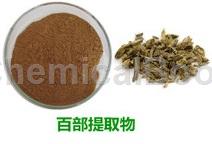Overview[1-2]
Benzoyl urea appears as leaf-shaped crystals in ethanol and can be decomposed into benzamide and cyanuric acid when heated. It can be used in organic synthesis. It does not decompose when combined with NaNO2 and dilute H2SO4 at room temperature. The benzoylurea insecticides developed in the late 1970s are neither traditional nerve agents nor acetylcholinesterase inhibitors, but highly effective inhibitors of chitin synthesis. So far, the exact biochemical mechanism of this type of compound has not been fully elucidated, but it is generally believed that it mainly prevents the biosynthesis and deposition of chitin in insect epidermis, causing UDPAG to accumulate in the insect body and thinning the insect epidermis. Body fluids leak out, or the body cannot shed its skin and die. Great progress has been made in the structural modification and synthesis of benzoylurea insect chitin biosynthesis inhibitors. Such compounds have unique mechanisms of action that are different from traditional pesticides and are environmentally friendly, reflecting the development trend of modern pesticides.
Structure

Preparation method[2]
Place 0.234g (1mmol) iodoanisole, 0.090g (1.5mmol) urea, 0.0068g (0.030mmol) palladium acetate, 280μL (2mmol) triethylamine and 54μL (0.4mmol) pentacarbonyl iron, 4mL without Add water acetonitrile into the Shrek tube, stir the reaction at 80°C for 12 hours, stop the reaction, naturally cool to room temperature, and separate by column chromatography (use a mixture of petroleum ether and ethyl acetate with a volume ratio of 1:1 as the eluent). A white solid benzoyl urea was obtained with a yield of 88%. The obtained product was characterized with a BrukerAvance superconducting Fourier digital nuclear magnetic resonance spectrometer. The characterization data are: 1HNMR (400MHz, DMSO) δ10.55 (s, 1H), 8.11 (s, 1H), 7.97 (d, J=7.5Hz , 2H), 7.60 (t, J=7.4Hz, 1H), 7.49 (t, J=7.7Hz, 2H), 7.42 (s, 1H); 13CNMR (101MHz, DMSO) δ168.25, 154.41, 132.77, 128.56 ,128.23.
Main reference materials
[1] Progress in research and development of benzoyl ureas compounds
[2] CN201710609757.4 A mild carbonylation arylation reaction method for urea compounds

 微信扫一扫打赏
微信扫一扫打赏

